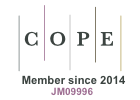Abstract
Mycosociological studies on microfungi parasitising vascular plants were carried out on 21 permanent observation plots in 5 phytocoenoses representing beech forests (Luzulo pilosae-Fagetum, Melico-Fagetum, Dentario enneaphyllidis-Fagetum, Carici-Fagetum) and xerothermic grassland (Origano-Brachypodietum pinnati) as well as using route method in other plant communities. The frequency of host plants and fungi occurring on permanent plots was estimated using 5-degree scale. The observations yielded in 478 fungal species belonging to Peronosporales (Oomycota), Dothideales, Erysiphales, Helotiales, Hypocreales, Mycosphaerellales, Phyllachorales, Pleosporales, Xylariales (Ascomycota), Uredinales, Microbotryales, Urocystales (Basidiomycota) and Hyphomycetes and Coelomycetes (anamorphic fungi), which were hosted by 301 species of vascular plants as well as by 19 taxa of Erysiphales and Uredinales. The predominanting group was anamorphic fungi (65% of species), especially members of Sphaeropsidales (39%). This group was however less dispersed on the study area than Uredinales and Erysiphales, which were represented by relatively small number of species. The results provided data on diversi- fied occurrence of fungi depending on abiotic (humidity, temperature, insolation) and biotic factors (e.g. density of host plant population) provided by plant communities. The differences concern species composition and richness of fungi, their distribution as well as frequency of hosts and parasites. In the case of members of Erysiphales, Moniliales and Peronosporales differences in phenology were also noted. The greatest species richness and distribution of the micromycetes was observed in Origano-Brachypodietum and the poorest were plots of Luzulo pilosae-Fagetum. Most frequently the parasites infected small percentage of the individuals in the population of the hosts (about 1%), which occurred with the lowest coverage (below 10%). This type of relationship between frequency of fungi and density of plants dominated in all of the studied phytocenoses. Sixty two species of fungi observed on Wyżyna Częstochowska Upland are new for Polish biota. They belong to anamorphic fungi, mainly to Phyllosticta (32 species) and Ascochyta (15).
Keywords
microfungi; anamorphic fungi; fungal ecology; fungal phenology; beech forest; xerothermic grassland; mycocoenology; Central Poland






